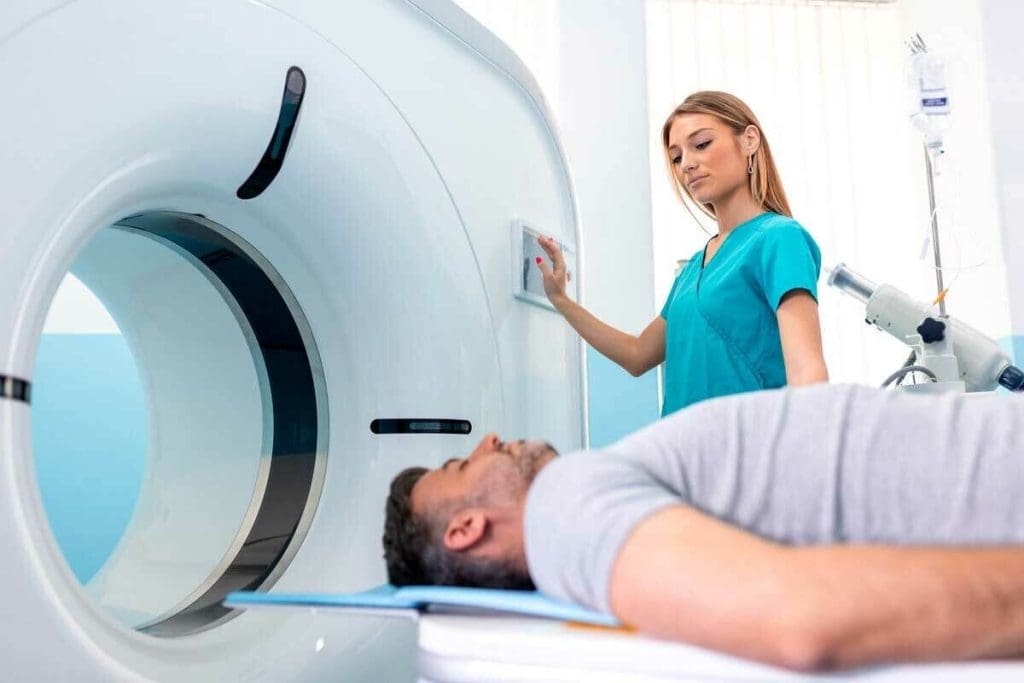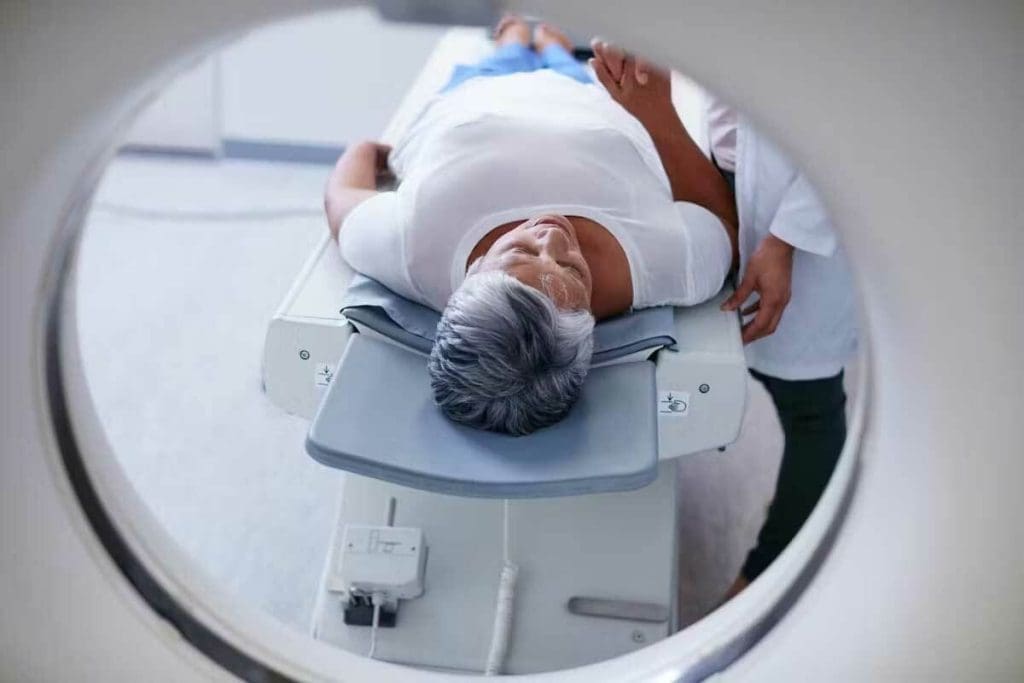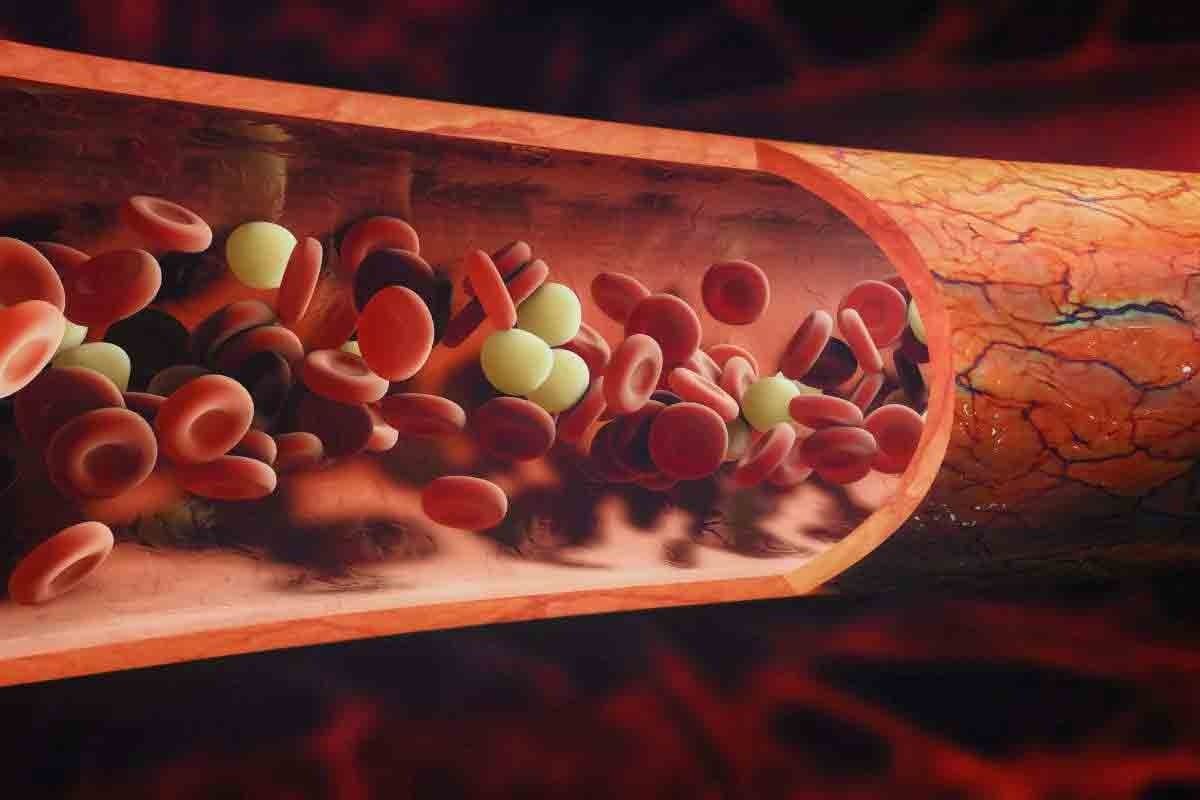Last Updated on November 27, 2025 by Bilal Hasdemir

Preparing for a PET scan is crucial for accurate results and your overall health. At Liv Hospital, patient safety and diagnostic accuracy are top priorities. One important guideline is to avoid smoking before a PET scan, as it can significantly impact the test’s outcome.
Nicotine and other chemicals in tobacco can alter your body’s metabolism and blood flow, leading to inaccurate imaging results. Understanding why no smoking before PET scan is important, as proper preparation, including avoiding smoking, ensures that your PET scan provides the most accurate information for your diagnosis and treatment plan.
Key Takeaways
- Smoking before a PET scan can lead to inaccurate results due to altered metabolism and blood flow.
- Proper preparation is crucial for diagnostic accuracy and patient safety.
- Liv Hospital prioritizes patient-focused care and adheres to strict safety guidelines.
- Avoiding smoking before a PET scan is essential for reliable imaging results.
- Following preparation guidelines ensures the best possible outcome for your diagnosis and treatment.
Understanding PET Scans: What They Are and How They Work

Positron Emission Tomography (PET) scans are a sophisticated diagnostic tool used to assess various bodily functions. By utilizing radiotracers, PET scans provide valuable insights into metabolic activity, blood flow, and chemical composition within the body.
PET imaging technology has revolutionized the field of diagnostic medicine. According to
“PET scans have become an indispensable tool in oncology, cardiology, and neurology, offering a unique window into the body’s metabolic processes.”
This capability allows healthcare professionals to diagnose and monitor a wide range of conditions more effectively.
The Science Behind PET Imaging
The science behind PET imaging involves the use of radiotracers, which are substances that emit positrons. When these positrons collide with electrons, they produce gamma rays that are detected by the PET scanner. This information is then used to create detailed images of the body’s internal structures and functions.
The process involves several key steps:
- The patient is injected with a radiotracer, which accumulates in areas of the body with high chemical activity.
- The PET scanner detects the gamma rays emitted by the radiotracer.
- A computer reconstructs the data into images that provide insights into metabolic processes.
Types of Conditions Diagnosed with PET Scans
PET scans are versatile diagnostic tools used to diagnose and monitor various conditions, including cancer, neurological disorders, and cardiovascular disease. The ability to assess metabolic activity makes PET scans particularly useful in oncology, where they help in staging cancer, monitoring treatment response, and detecting recurrence.
In neurology, PET scans are used to diagnose and monitor conditions like Alzheimer’s disease and Parkinson’s disease. In cardiology, they help assess blood flow to the heart muscle, identifying areas of reduced blood flow that may indicate coronary artery disease.
Why No Smoking Before a PET Scan

The prohibition on smoking before a PET scan is rooted in the science behind how PET scans work. PET scans rely on the body’s metabolic activity to produce accurate images. Nicotine and other chemicals in tobacco products can significantly alter this metabolic activity, potentially leading to inaccurate scan results.
How Nicotine Affects Metabolism and Blood Flow
Nicotine, the primary psychoactive substance in tobacco, stimulates the body’s metabolic rate and alters blood flow. This can lead to changes in how the tracer used in PET scans is absorbed and distributed throughout the body. As a result, nicotine can affect the accuracy of PET scan images, potentially masking or mimicking disease processes.
The impact of nicotine on blood flow is particularly significant because PET scans often rely on measuring blood flow to assess organ function and detect abnormalities. Altered blood flow due to nicotine consumption can lead to misinterpretation of scan results, potentially resulting in incorrect diagnoses or the need for additional testing.
Impact on Tracer Absorption and Image Quality
The tracer used in PET scans is designed to be absorbed by the body’s tissues in a way that reflects their metabolic activity. Nicotine can interfere with this process, affecting how the tracer is taken up by different tissues. This can compromise the quality of the PET scan images, making it more challenging to accurately diagnose conditions.
Furthermore, nicotine’s vasoconstrictive effects can reduce blood flow to certain areas, potentially limiting the delivery of the tracer to those regions. This can lead to incomplete or inaccurate imaging, which may not provide a clear picture of the body’s metabolic activity.
Potential for False Positives and Missed Diagnoses
The alterations in metabolism and blood flow caused by nicotine can lead to false positives or false negatives in PET scan results. False positives may indicate disease where none exists, leading to unnecessary anxiety and additional testing. Conversely, false negatives may miss actual disease processes, delaying diagnosis and treatment.
By avoiding smoking before a PET scan, patients can help ensure that their scan results are as accurate as possible. This is crucial for obtaining a correct diagnosis and developing an appropriate treatment plan. Accurate PET scan results are essential for effective patient care, making the avoidance of smoking before the scan a critical aspect of the preparation process.
Timeline: When to Stop Smoking Before Your PET Scan
The timing of smoking cessation before a PET scan can significantly impact the scan’s accuracy. It’s essential to understand the guidelines for stopping smoking to ensure that your PET scan results are reliable.
The Standard 12-Hour Rule
Generally, patients are advised not to smoke or use nicotine products for at least 12 hours before a PET scan. This timeframe helps minimize the effects of nicotine on your metabolism and blood flow, which can interfere with the tracer absorption and image quality.
Following this guideline is crucial because nicotine can cause blood vessels to constrict, potentially affecting the distribution of the tracer used in the PET scan. By abstaining from smoking for at least 12 hours, you help ensure that the tracer is absorbed consistently, leading to clearer images and more accurate diagnoses.
Extended Timeframes for Heavy Smokers
For heavy smokers, the standard 12-hour rule might not be sufficient. Heavy smoking is typically defined as smoking more than a pack of cigarettes per day. If you’re a heavy smoker, your healthcare provider might recommend a longer period of abstinence from smoking before your PET scan.
- Some studies suggest that heavy smokers may need to abstain from smoking for 24 to 48 hours before a PET scan to minimize nicotine’s impact on the scan’s accuracy.
- It’s crucial to follow your healthcare provider’s specific instructions regarding smoking cessation before your PET scan.
What About Nicotine Patches and E-cigarettes?
Nicotine replacement therapy (NRT) products, such as nicotine patches and e-cigarettes, also contain nicotine, which can affect PET scan results. It’s generally recommended to avoid using these products for the same period as smoking, typically at least 12 hours before your PET scan.
“The use of nicotine products, including NRT and e-cigarettes, should be discussed with your healthcare provider to determine the best approach for your PET scan preparation.”
When preparing for your PET scan, it’s essential to disclose all nicotine products you’re using to your healthcare provider. They can provide personalized guidance based on your smoking habits and overall health.
By understanding and following these guidelines, you can help ensure that your PET scan results are as accurate as possible, leading to better diagnosis and treatment planning.
Fasting Requirements for Accurate PET Scan Results
Fasting before a PET scan is a critical preparation step that significantly impacts the quality of the scan results. The goal of fasting is to ensure that the tracer is absorbed by the body in a way that provides clear and accurate images.
Standard Fasting Guidelines
Typically, patients are required to fast for 4 to 6 hours before their PET scan. This timeframe helps to minimize the impact of recent food consumption on the tracer’s absorption. It’s essential to follow the specific fasting instructions provided by your healthcare provider, as the requirements may vary depending on the type of PET scan and your individual health needs.
What Foods and Beverages to Avoid
During the fasting period, it’s crucial to avoid consuming foods and beverages that could interfere with the PET scan results. This includes:
- Sugary foods and drinks
- Caffeine
- High-fat meals
Avoiding these items helps ensure that the tracer is distributed evenly throughout the body, providing a clearer picture of the areas being scanned.
Can You Take Medications While Fasting?
It’s generally recommended to consult with your healthcare provider about taking medications while fasting for a PET scan. Some medications may need to be taken with food to avoid stomach upset, while others may not be affected by fasting. Your healthcare provider can provide guidance on how to manage your medications during the fasting period.
Why Caffeine is Prohibited Before PET Scans
The prohibition on caffeine before PET scans is based on its effects on the body’s metabolism and blood flow. Caffeine is a stimulant that can alter these physiological processes, potentially impacting the accuracy of PET scan results.
Caffeine’s Effects on Metabolism and Blood Flow
Caffeine can increase heart rate and blood pressure, which in turn affects blood flow and potentially alters the distribution of the tracer used in PET scans. This alteration can lead to inaccurate readings or the need for additional scans.
Common Sources of Caffeine to Avoid
To prepare for a PET scan, patients need to avoid common sources of caffeine, including:
- Coffee and tea
- Chocolate
- Some medications
- Energy drinks
Awareness of these sources is crucial for adhering to pre-PET scan dietary restrictions.
The 24-Hour Caffeine Restriction Explained.d
The recommendation to avoid caffeine for 24 hours before a PET scan is to ensure that its effects on metabolism and blood flow are minimized. This timeframe helps in achieving more accurate PET scan results.
| Caffeine Source | Time to Avoid |
| Coffee | 24 hours |
| Tea | 24 hours |
| Chocolate | 24 hours |
| Energy Drinks | 24 hours |
By understanding and adhering to these guidelines, patients can help ensure the accuracy of their PET scan results.
Special Preparation Instructions for Diabetic Patients
For diabetic patients, preparing for a PET scan involves more than just the standard instructions. It requires careful management of blood sugar levels, potential adjustments to medication, and clear communication with your healthcare team.
Managing Blood Sugar Levels Before the Scan
Diabetic patients need to manage their blood sugar levels carefully before a PET scan. High or low blood sugar can affect the accuracy of the scan results. It’s essential to follow your doctor’s advice on how to manage your blood sugar levels in the days leading up to the scan.
Typically, patients are advised to monitor their blood glucose closely and adjust their diet or medication as necessary to keep their levels within a target range. This helps ensure that the PET scan provides accurate and reliable results.
Medication Adjustments for Diabetics
Some diabetic medications may need to be adjusted before a PET scan. Certain medications, such as metformin, may be temporarily stopped or adjusted to prevent any potential interactions with the PET scan tracer.
It’s crucial to discuss your medication regimen with your healthcare provider. They will advise on any necessary adjustments to ensure your safety and the accuracy of the scan.
Communication with Your Healthcare Team
Effective communication with your healthcare team is vital. Inform them about your diabetes management plan, including any medications you’re taking and your typical blood sugar levels.
Your healthcare team can provide personalized guidance on preparing for the PET scan, taking into account your specific needs as a diabetic patient. Don’t hesitate to ask questions or express any concerns you may have.
What to Expect During Your PET Scan Appointment
Understanding what to expect during your PET scan appointment can significantly reduce anxiety and help you prepare for the procedure. A PET scan is a sophisticated imaging test that helps diagnose and manage various medical conditions.
Arrival and Check-in Procedures
Upon arrival, you’ll typically be asked to check in at the reception desk, where you’ll provide your identification and any necessary paperwork. It’s essential to arrive on time, as latecomers might experience delays or even rescheduling.
Tracer Injection and Uptake Period
After check-in, a small amount of radioactive tracer will be injected into your vein. This tracer accumulates in the areas of your body that are being examined. You’ll then be asked to wait for a period, usually about an hour, to allow the tracer to distribute throughout your body. During this uptake period, you may be asked to remain still and quiet to ensure optimal tracer distribution.
The Actual Scanning Process
Once the uptake period is complete, you’ll be guided to the PET scanner. You’ll lie on a comfortable table that slides into the scanner. The scanning process itself is usually painless and takes about 30 minutes, although the total time in the scanning room may be longer. It’s crucial to remain still during the scan to ensure clear images.
Comfort and Safety During the Scan
The PET scan team is dedicated to ensuring your comfort and safety throughout the procedure. You’ll be able to communicate with them through an intercom, and they will monitor you from another room. If you experience any discomfort or need assistance, don’t hesitate to let them know.
By understanding the steps involved in a PET scan appointment, you can better prepare yourself for the experience, making it as smooth and stress-free as possible.
Time Commitment: How Long Does a PET Scan Take?
Understanding the time required for a PET scan is crucial for planning your day. A PET scan is a sophisticated diagnostic tool that provides valuable insights into your health, and being prepared can make the process smoother.
Total Appointment Duration
The total time you spend at the facility for a PET scan typically ranges from 2 to 3 hours. This duration encompasses various stages, including preparation, tracer uptake, and the actual scanning process.
Actual Scanning Time
The actual PET scan procedure usually takes between 30 to 60 minutes. This is the time during which you will be positioned on the scanning table, and the scanner will capture the necessary images.
Factors That May Extend Your Appointment
Several factors can influence the overall duration of your PET scan appointment. These include:
- The need for additional imaging or scans
- Complexity in positioning you for the scan
- Any unexpected issues during the scanning process
- The specific protocols of the imaging facility
It’s essential to follow the instructions provided by your healthcare team and the imaging facility to ensure that your appointment proceeds as smoothly and quickly as possible.
By understanding the time commitment required for a PET scan, you can better plan your day and reduce any anxiety related to the procedure. If you have any concerns about the duration or any other aspect of your PET scan, don’t hesitate to discuss them with your healthcare provider.
Post-Scan Considerations: What Happens After Your PET Scan
Once your PET scan is finished, it’s natural to wonder what’s next in your diagnostic journey. After the scan, there are several factors to consider to ensure a smooth recovery and to understand when you can expect your results.
Can You Drive After a PET Scan?
Most patients can drive themselves home after a PET scan unless they were given sedatives during the procedure. If sedatives were used, it’s recommended to have someone accompany you or arrange for transportation. It’s always best to consult with your healthcare provider for specific guidance.
Resuming Normal Activities and Diet
Generally, patients can resume their normal activities and diet after a PET scan, unless their healthcare provider advises otherwise. It’s essential to follow any specific instructions provided by your healthcare team to ensure your safety and the accuracy of your scan results.
When to Expect Results
The timeframe for receiving PET scan results can vary. Typically, your doctor will receive the results within a few days, but this can range from 24 hours to a week or more, depending on the complexity of the scan and the facility’s workload.
To better understand the process and timeline, here’s a summary table:
| Activity | Guidelines |
| Driving After PET Scan | Allowed unless sedatives were used |
| Resuming Normal Activities | Generally allowed immediately |
| Resuming Normal Diet | Allowed unless advised otherwise |
| Receiving PET Scan Results | Typically, within a few days |
Understanding these post-scan considerations can help alleviate any anxiety and ensure you’re prepared for the next steps in your care.
Navigating Insurance and Approval for PET Scans
Insurance approval for PET scans is a multifaceted process that requires careful navigation. Understanding the intricacies of PET scan insurance can significantly ease the journey to getting your scan approved.
Common Requirements for Insurance Coverage
To ensure that your PET scan is covered by your insurance, certain requirements must be met. Typically, insurance providers require a doctor’s referral or a prescription that justifies the need for a PET scan. Pre-authorization is often necessary, involving the submission of documentation to your insurance company for approval before the scan is performed.
| Requirement | Description |
| Doctor’s Referral | A prescription or referral from your doctor justifying the need for a PET scan. |
| Pre-authorization | Submission of documentation to your insurance company for approval before the scan. |
| Medical Necessity | Proof that the PET scan is medically necessary for your diagnosis or treatment plan. |
The Pre-authorization Process
The pre-authorization process is a critical step in securing insurance coverage for your PET scan. It involves your healthcare provider submitting a request to your insurance company, detailing the medical necessity of the scan. This process can vary between insurance providers, but generally includes the submission of patient information, the reason for the scan, and relevant medical history.
“Pre-authorization is not just a formality; it’s a crucial step that ensures your PET scan is covered by your insurance. Understanding this process can help reduce delays and complications.”
What to Do If Your Scan Is Denied
If your PET scan is denied by your insurance company, it’s not the end of the road. You have the right to appeal the decision. The first step is to understand the reason behind the denial, which is usually provided by the insurance company. Common reasons include lack of medical necessity or insufficient information.
Steps to Appeal:
- Review the denial letter carefully to understand the reason.
- Gather additional information or documentation that supports your case.
- Submit an appeal to your insurance company, including any new information.
- Follow up with your insurance provider to ensure your appeal is processed.
Navigating the insurance and approval process for PET scans requires patience and persistence. By understanding the common requirements for insurance coverage, the pre-authorization process, and the steps to take if your scan is denied, you can ensure a smoother experience.
Conclusion: Ensuring the Best Possible PET Scan Results
Proper preparation is crucial for achieving accurate and reliable PET scan results. By avoiding smoking and caffeine and following the recommended fasting guidelines, patients can help ensure the best possible PET scan results.
As discussed, nicotine and caffeine can significantly impact the quality of PET scan images. Stopping smoking and avoiding caffeine for the recommended period before the scan can minimize potential interference. Adhering to fasting requirements is also vital for obtaining clear and accurate images.
By following these guidelines, patients can help their healthcare team obtain the most accurate PET scan results. This, in turn, enables healthcare professionals to make informed decisions about diagnosis and treatment. Ensuring the best possible PET scan results is a collaborative effort between patients and their healthcare providers.
FAQ
Can you smoke before a PET scan?
No, smoking is not allowed before a PET scan as nicotine can affect the body’s metabolism and blood flow, leading to inaccurate imaging results.
How long should I stop smoking before a PET scan?
The standard recommendation is to stop smoking at least 12 hours before the scan, but heavy smokers may need to stop for an extended period.
Can I use nicotine patches or e-cigarettes before a PET scan?
It’s best to consult with your healthcare team about using nicotine patches or e-cigarettes before a PET scan, as they may still affect the scan results.
Do I have to fast for a PET scan?
Yes, standard fasting guidelines typically require fasting for 4-6 hours before the scan to ensure accurate results.
What foods and beverages should I avoid before a PET scan?
Avoid consuming foods and beverages that may affect your metabolism or blood sugar levels, such as sugary drinks or heavy meals, during the fasting period.
Can I take medications while fasting for a PET scan?
Consult with your healthcare team about taking medications while fasting, as some medications may need to be adjusted or taken with a small amount of water.
Why can’t I have caffeine before a PET scan?
Caffeine can affect metabolism and blood flow, potentially altering the scan results, so it’s recommended to avoid caffeine for 24 hours before the scan.
How do I manage my blood sugar levels before a PET scan if I’m diabetic?
Diabetic patients should work closely with their healthcare team to manage their blood sugar levels before the scan, and may need to adjust their medication or insulin dosage.
What happens during a PET scan appointment?
During the appointment, you’ll undergo a tracer injection, followed by an uptake period, and then the actual scanning process, during which you’ll be positioned on a scanning table.
How long does a PET scan take?
The total appointment duration is typically 2-3 hours, with the actual scanning time ranging from 30-60 minutes.
Can I drive after a PET scan?
Generally, you can drive after a PET scan, but it’s recommended to have someone accompany you to the appointment in case you experience any discomfort or dizziness.
When can I expect the results of my PET scan?
The timeframe for receiving PET scan results varies, but typically, your healthcare team will inform you about the expected timeframe, which can range from a few hours to several days.
How do I navigate insurance and approval for a PET scan?
To ensure insurance coverage, you’ll need to meet common requirements, undergo pre-authorization, and work closely with your healthcare team to address any issues that may arise during the process.
Reference
- Jiang, M., et al. (2022). Effects of cigarette smoking on the metabolic activity of lung cancer on ^18F-FDG PET/CT. PeerJ.https://pmc.ncbi.nlm.nih.gov/articles/PMC9048646/






